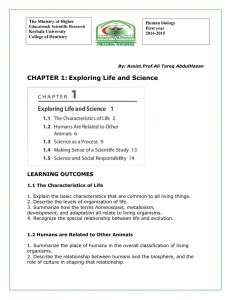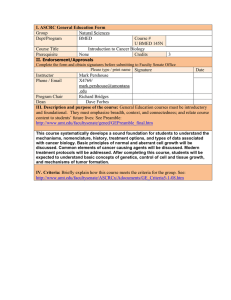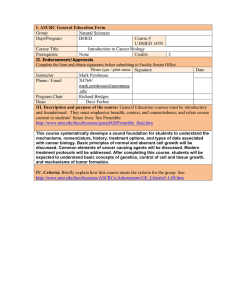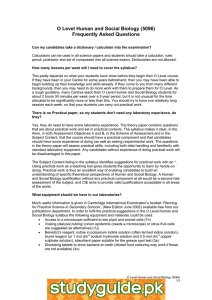Biology Syllabus
advertisement
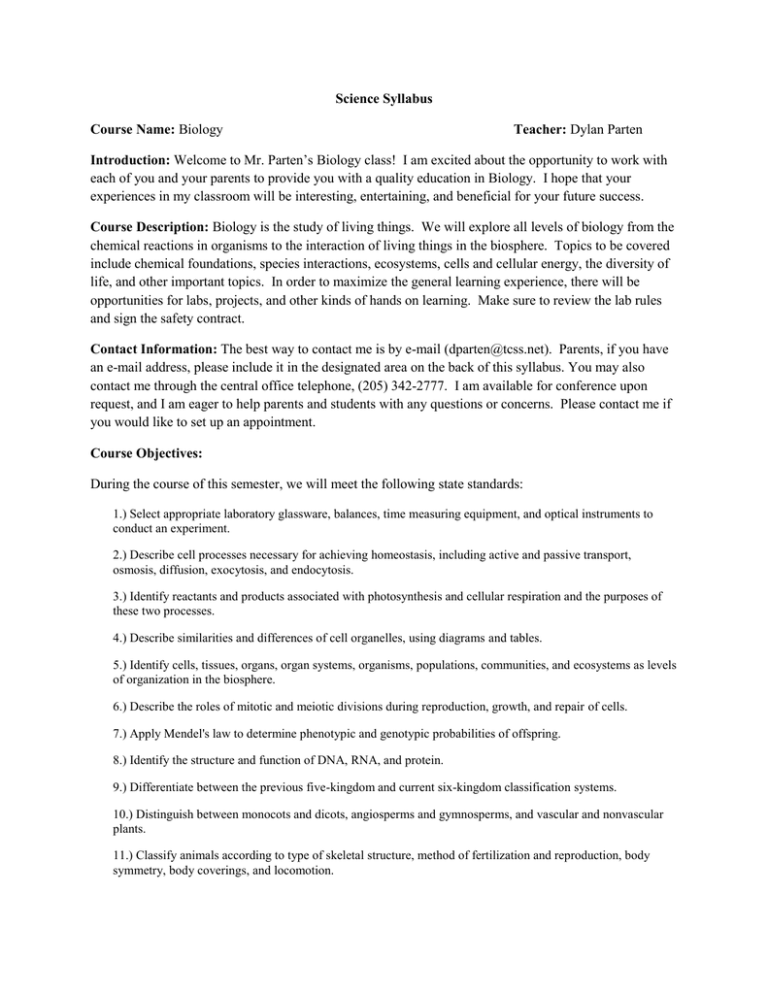
Science Syllabus Course Name: Biology Teacher: Dylan Parten Introduction: Welcome to Mr. Parten’s Biology class! I am excited about the opportunity to work with each of you and your parents to provide you with a quality education in Biology. I hope that your experiences in my classroom will be interesting, entertaining, and beneficial for your future success. Course Description: Biology is the study of living things. We will explore all levels of biology from the chemical reactions in organisms to the interaction of living things in the biosphere. Topics to be covered include chemical foundations, species interactions, ecosystems, cells and cellular energy, the diversity of life, and other important topics. In order to maximize the general learning experience, there will be opportunities for labs, projects, and other kinds of hands on learning. Make sure to review the lab rules and sign the safety contract. Contact Information: The best way to contact me is by e-mail (dparten@tcss.net). Parents, if you have an e-mail address, please include it in the designated area on the back of this syllabus. You may also contact me through the central office telephone, (205) 342-2777. I am available for conference upon request, and I am eager to help parents and students with any questions or concerns. Please contact me if you would like to set up an appointment. Course Objectives: During the course of this semester, we will meet the following state standards: 1.) Select appropriate laboratory glassware, balances, time measuring equipment, and optical instruments to conduct an experiment. 2.) Describe cell processes necessary for achieving homeostasis, including active and passive transport, osmosis, diffusion, exocytosis, and endocytosis. 3.) Identify reactants and products associated with photosynthesis and cellular respiration and the purposes of these two processes. 4.) Describe similarities and differences of cell organelles, using diagrams and tables. 5.) Identify cells, tissues, organs, organ systems, organisms, populations, communities, and ecosystems as levels of organization in the biosphere. 6.) Describe the roles of mitotic and meiotic divisions during reproduction, growth, and repair of cells. 7.) Apply Mendel's law to determine phenotypic and genotypic probabilities of offspring. 8.) Identify the structure and function of DNA, RNA, and protein. 9.) Differentiate between the previous five-kingdom and current six-kingdom classification systems. 10.) Distinguish between monocots and dicots, angiosperms and gymnosperms, and vascular and nonvascular plants. 11.) Classify animals according to type of skeletal structure, method of fertilization and reproduction, body symmetry, body coverings, and locomotion. 12.) Describe protective adaptations of animals, including mimicry, camouflage, beak type, migration, and hibernation. 13.) Trace the flow of energy as it decreases through the trophic levels from producers to the quaternary level in food chains, food webs, and energy pyramids. 14.) Trace biogeochemical cycles through the environment, including water, carbon, oxygen, and nitrogen. 15.) Identify biomes based on environmental factors and native organisms. 16.) Identify density-dependent and density-independent limiting factors that affect populations in an ecosystem. Course Materials: 1. Three ringed binder: This binder must be used only for biology materials. 2. No. 2 Pencils 3. At least 2 red pens 4. Calculator (simple 4 function will work) *You will need to bring these materials to class every day* Attendance: Attendance is critical to your success in school. Students who have an excused absence from school must make up work within two days of their return. Students who miss school with an unexcused absence will not be allowed to make up work. It is the student’s responsibility to schedule a time to make up work that is convenient to both the student and the teacher. The make up work folder will be available for students who miss class. Grading Policy: Grades will be calculated based on a percentage system. Below is a list of categories and their weighted percentages. Chapter Tests (some tests may cover multiple chapters) 9 Weeks Tests (comprehensive) Homework (graded for completion or accuracy) Assorted Assignments (class work, quizzes, labs, notebook tests, etc.) Participation (engagement and active participation in daily activities) 40% 15% 15% 25% 5% Late assignments will receive deductions, half credit, or no credit. Half-way through each 9 weeks grading period, students will be given a progress report which outlines their grades.. Occasional opportunities for extra credit may be provided at my discretion. *This document is subject to change and students will be notified of such changes.* Please check this box if you do not want your child included in any class pictures or videos. I, the undersigned, have read and understand the provisions of this class syllabus, and I have also read the class and computer lab rules. Student Signature _____________________ Parent Signature __________________ Parent E-mail Address _____________________







